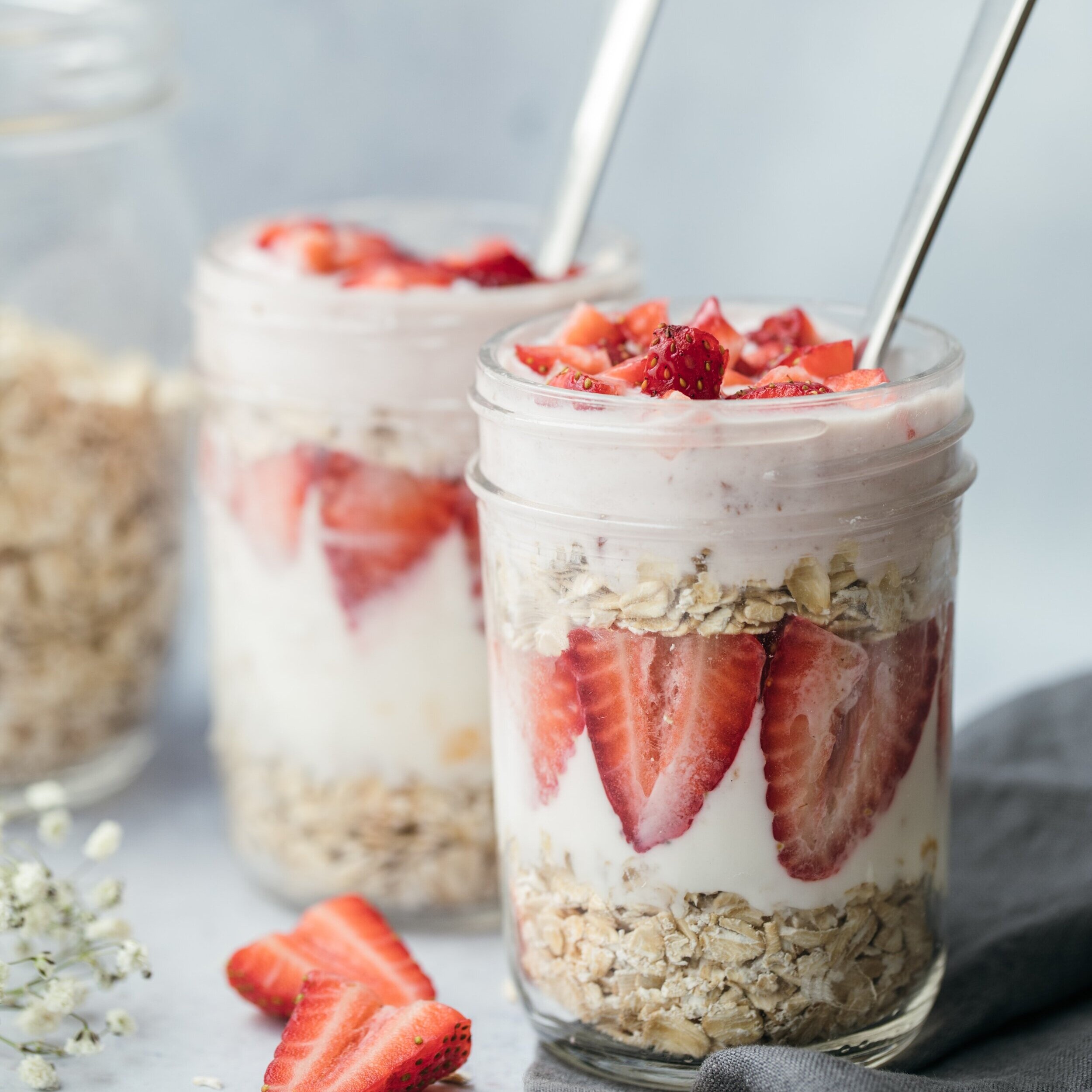On the Matcha Craze: What's so Magical about Matcha?
by JENNIFER NGUYEN
There seems to be an abundance of superfood trends popping up every week. If you are active on Instagram or Twitter, you have most likely seen the countless images of matcha lattes, matcha cakes, matcha smoothies, and many more matcha-themed sweets plastered all over your feed. While matcha has long been a part of traditional Japanese tea ceremonies, it has only recently skyrocketed in popularity. As with any new trend, you may wonder what the hype is behind it. So what is it about matcha that makes it so magical?
What is matcha?
Vibrant in hue, matcha is a type of high-grade green tea. However, matcha differs from other types of green tea in that it is not just infused in water.
Matcha requires a special farming and processing technique. For four weeks, the plants are shade-grown, avoiding direct sunlight. This process increases the chlorophyll amount in the leaves, boosting the amino acid content. During harvest, the leaves are handpicked, and the stems and veins are removed. Then, the entire tea leaf is ground up into a fine powder that readily dissolves in hot water, also known as matcha. [1]
What are the health benefits?
It is high in antioxidants.
Like other green teas, matcha contains a class of antioxidants called catechins. In a 2003 study, matcha was found to contain 137 times more EGCG–a type of catechin–than regular green tea. [2] Incorporating matcha into your diet can therefore increase your antioxidant intake, helping to prevent cell damage. EGCG also has been linked to cancer-fighting properties, and a 1997 study found that green tea could potentially help with cancer prevention in humans. [3] [4]
It lowers the risk of heart disease.
Many studies have found a link between green tea and lower levels of LDL cholesterol, otherwise known as “bad” cholesterol. A high level of LDL cholesterol can lead to the accumulation of artery-clogging plaques, which can block oxygen and blood flow to the heart, thereby leading to a higher risk of heart attacks and strokes. [5] However, consuming green tea or matcha can potentially combat this; a 2009 study found that drinking green tea reduces the risk of the onset of strokes. Green tea contains catechins, which exert vascular-protective effects such as preventing blood clots, reducing the risk of stroke incidence. [6] So, drinking green tea or matcha may protect you from heart disease!
It protects the liver and kidneys.
According to a 2009 study, matcha helps prevent damage to the liver and kidneys. The study tested the effects of matcha supplementation on the progression of renal and liver damage in diabetic rats. The results found that matcha supplementation suppressed the accumulation of renal AGEs, harmful compounds that form when fat or protein combines with sugar. Higher levels of AGE have been linked with the development of many diseases, such as kidney failure and liver disease. As matcha reduces AGE levels, matcha can aid in lowering the risk of renal and liver damage. [7]
It can boost brain function.
A teaspoon of matcha typically contains 60-70 mg of caffeine, which is associated with improved cognitive function. [8] [9] In fact, a 2017 study found that matcha improves the speed of attention and memory in participants better than the placebo does. [10] Caffeine in matcha can therefore boost brain function by improving alertness, attention, and reaction time.
How does matcha compare to coffee?
While both matcha and coffee are sources of caffeine, they differ in how the caffeine is delivered to the body. Unlike coffee, matcha allows for a sustained alertness throughout the day. Matcha contains phytonutrients, including a compound known as L-theanine, which is known for its relaxing effects. Together with the caffeine that already exists in matcha, L-theanine provides alertness without the jitteriness that is commonly associated with caffeinated products. Thus, the body processes coffee differently from matcha such that matcha provides an energy boost without the caffeine crash. [11]
What happened when I incorporated matcha into my day?
I’ve never enjoyed the taste of coffee, but its ability to keep me awake through the long hours of the night is the reason why it remains a part of my everyday life in college. However, after looking into the added benefits of matcha, I decided to test whether or not the research actually holds up. After all, I was excited by the idea of getting my caffeine fix without having to endure the bitter taste of coffee.
Every day for a week, I started my mornings with a cup of matcha tea. My first cup was intimidating to make, but the process turned out to be super quick and easy. I’d simply add one teaspoon of matcha powder and two ounces of boiling water to a cup, and then stir or whisk until frothy! The taste of matcha took some getting used to, but after a while, its earthy and slightly sweet flavor became something I looked forward to.
After a week of drinking matcha every day, I noticed a couple of differences. With coffee, the caffeine kicked in really quickly. However, with matcha, I felt that the caffeine affected me more gradually. If the effect of caffeine in coffee were to be described as a sharp spike, that of matcha would be more like a gradual slope.
Furthermore, even though a cup of matcha contains less caffeine than the equivalent amount of coffee, I did not feel the need to drink multiple cups of matcha to stay awake throughout the day. With one cup of matcha every day, I experienced a steady flow of energy for around 5 hours. I did not experience any jitteriness nor did my heart race like it usually does with regular coffee. Best of all, there was no caffeine crash in the afternoon.
I noticed that matcha improved my overall energy levels throughout the week, though such an effect may be psychological. Nevertheless, matcha seemed to provide more benefits to my mind and body than caffeine does, and hence, I plan to incorporate matcha at least a few times per week as part of a healthy diet.
Bottom Line
While matcha comes from the same plant as many types of green teas, it packs a much more concentrated amount of antioxidants and nutrients since you are consuming the entire tea leaf. From lattes to green smoothies, matcha is very versatile and can be incorporated into your diet in various ways to better your health. Hopefully by now, you are ready to give the magic that is matcha a try!
References
"Is matcha good for you, and how can you use it?" medicalnewstoday.com. (2019).
"Determination of catechins in matcha green tea by micellar electrokinetic chromatography." Journal of Chromatography A. (2003).
"Cancer Prevention with Green Tea and Its Principal Constituent, EGCG: from Early Investigations to Current Focus on Human Cancer Stem Cells.” Molecules and Cells. (2018).
"Cancer-Preventive Effects of Drinking Green Tea among a Japanese Population.” Preventive Medicine. (1997).
"Green tea intake lowers fasting serum total and LDL cholesterol in adults: a meta-analysis of 14 randomized controlled trials.” American Journal of Clinical Nutrition. (2011).
"Green and black tea consumption and risk of stroke: a meta-analysis.” Stroke. (2009).
"Matcha, a powdered green tea, ameliorates the progression of renal and hepatic damage in type 2 diabetic OLETF rats." Journal of Medicinal Food. (2009).
"Acute effects of caffeine on attention: a comparison of non-consumers and withdrawn consumers." Journal of Psychopharmacology. (2012).
"The effect of caffeine on cognitive task performance and motor fatigue." Psychopharmacology. (2005).
"An intervention study on the effect of matcha tea, in drink and snack bar formats, on mood and cognitive performance.” Food Research International. (2017).
"A double-blind, placebo-controlled study evaluating the effects of caffeine and L-theanine both alone and in combination on cerebral blood flow, cognition and mood." Psychopharmacology. (2015).










Today, plant-based eating is gaining popularity as a way for people to express their beliefs about ethics, the environment, or wellness. It may seem daunting at first, but hopefully these recipes and perspectives from food bloggers Lisa Kitahara and Murielle Banackissa can inspire you!